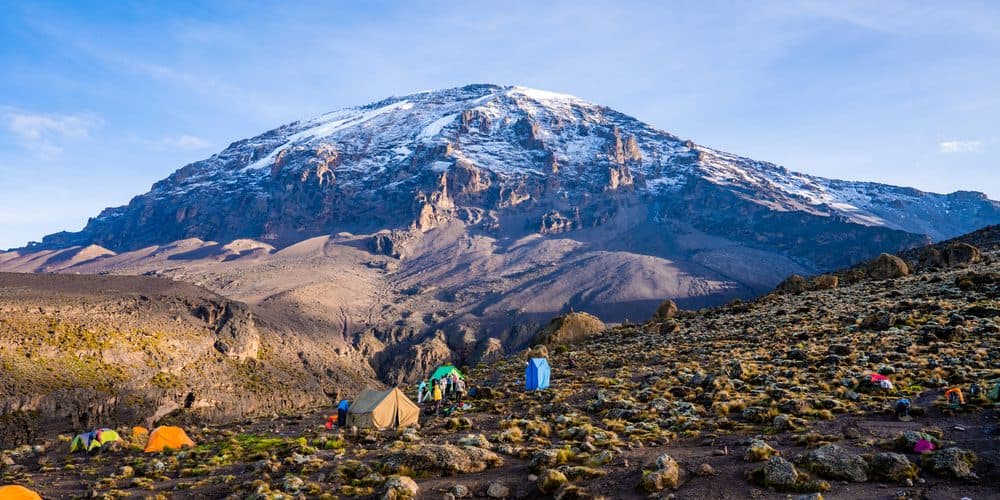As Kenyans were transfixed to their TV screens during the disputed presidential elections, our southern neighbors were busy establishing high-speed internet connections on Mount Kilimanjaro, Africa’s highest.
The news was covered by practically all of the main international media channels, with a few brief pings in Kenya. It sounded too wonderful to be true when you learned that you could now broadcast your ascent to the continent’s highest mountain.
According to NBC News, you may now tweet while climbing Mount Kilimanjaro. Wi-Fi connection is now one less concern for climbers, trekkers, and adventure seekers as they ascend Mount Kilimanjaro, according to CNBC.
Except for their standard “Tanzania owns the mountain and Kenya owns the views” mantra, even Kenya’s infamous keyboard warriors, who enjoy picking an internet fight with their neighbors, remained silent on this issue.
They may have been gold in their quiet. In terms of basic amenities, seasoned hikers claim that the experience of ascending Mount Kenya alone—second-highest Africa’s mountain—is not particularly noteworthy. On one of the most recognizable monuments in the nation, climbers have faced the absence of adequate sanitary facilities. One of Magical Kenya’s Key Signature Experiences, the exclusive itineraries designed to highlight Kenya as a tourism hotspot, includes hiking Mount Kenya. The mountain’s striking panorama is something that any climber to Lenana Peak, the only point that does not need technical climbing, can attest to.
Conservationist Bongo Woodley conducted a survey on the mountain and found 882 plant species, 81 of which are unique to it. At the base, a thick forest rises to approximately 10,000 feet.
Then there is the Afro-Alpine zone vegetation, some of which are unique to high altitude regions in East and Central Africa, such as the enormous groundsels and the lovely lobelias, while the beauty of the area around the peaks is accentuated by various tarns.
Mount Kenya was designated a forest reserve in 1932, and the national park was established in 1949. The Man and the Biosphere (MAB) program of UNESCO designated Mount Kenya as a Biosphere Reserve due to its natural riches.
The mountain received the most accolades, though, in December 1997 when the World Heritage Committee, which is based in Naples, Italy, declared it to be a World Heritage Site. This was done because it is “one of the most impressive landscapes of Eastern Africa with its rugged glacier-clad summits, Afro-Alpine moorlands, and diverse forests which illustrate outstanding ecological processes.”
However, the mountain’s high value as a premier tourist destination risks being tarnished by a dearth of adequate sanitary facilities.
Even Najib Balala, who has been in charge of the tourism agenda, admitted the inadequate status of the sanitation facilities. He had climbed the peak in May 2022 to generate money for the “improvement of hiker experiences,” as he put it.
He was adamant about it: “Through this trip, we will also raise money to assure the renovation of tourism amenities, including improvement of restrooms at several halt locations along the route.”
Those who have hiked on East Africa’s biggest mountains claim that Kenya lacks the climbing experience that Tanzania and Uganda do. Job Mugo, a hiker who has lost track of how many peaks he has ascended in the area, quips, “Mount Kenya is a tragic story.
“Look, the men in the Rwenzori Mountains of Uganda have flushing toilets with running fresh water pipelines. Following the use of a particular campsite, several parties, including tour operators, clean the pit latrines twice daily at Kilimanjaro, he continues. Mountain Kenya? Attempt the bush.
Hikers who were sick of the embarrassment started an online petition to encourage the development of basic sanitation services on the mountain. Nearly 3,000 people have so far signed the petition.
“Mount Kenya lacks decent sanitation facilities or they are non-existent in all the camping routes,” the petition stated in part. This indicates that human waste cannot be properly disposed of, as is disgustingly obvious throughout the camps. The popular destinations (Lake Michaelson, Lake Ellis, Mintos Camp) along the Chogoria Route are most severely impacted. Others include Timau Route, Burgret, and Kamweti.
Wandai Gitonga, the creator of the outdoor adventure company Hikemaniak, is one of the petition’s leading supporters. A record-breaking 43 times and counting, Gitonga has climbed the peak. He claims that when compared to other big mountains in East Africa, including Kilimanjaro, the mountain’s beauty is unmatched.
The image of the peaks that serves as the face of the online campaign also shows tissue paper lying around in the foreground not far from a body of water. Gitonga is concerned for populations residing surrounding the mountain as well as climbers’ health and the environment.
There is so much human waste building up every day, yet climbers and the locals must get water from further downstream. As the waste is transported to the water system, we are facing a health catastrophe of epic proportions, he claims.
For climbers with unique needs, such as women whose sanitation requirements go beyond simply using the restroom, the situation is particularly bad. Gitonga claims that the dynamics of attaining such lofty views occasionally alter a woman’s monthly cycle, with some having to deal with unforeseen menstruation.
